Text
Cephalopod Week
This week is #CephalopodWeek, and today, we bring you this cephalopod who has seen better days.
The beautiful shell of this poor Nautilus was too much temptation for the artists and craftspeople of the Renaissance and Baroque period who fashioned indulgent Nautilus cups from gold, silver and real Nautilus shells.
Though they have survived five mass extinctions, Nautilus are now endangered by their harvesting by the shell trade. In more ways than one, ornaments made from Nautilus shells belong in museums.

#CephalopodWeek#Cephalopod#Conservation#Nautilus#Renaissance#Baroque#ArtHistory#Ashmolean#AshmoleanMuseum#Museum#Oxford#OxfordUniversity#Collections#Gold#DecorativeArts
200 notes
·
View notes
Text
Windrush Day
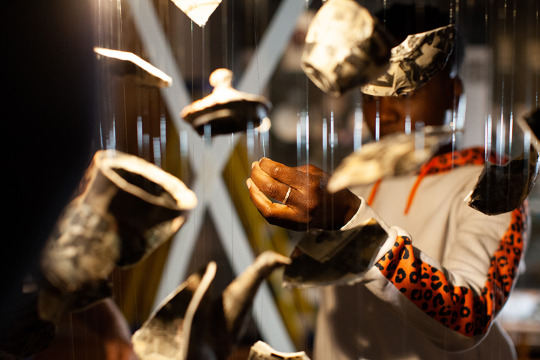
On the third official Windrush Day, we recognise the half a million people who travelled to the UK after World War II, and celebrate the contributions of the Windrush generation and their descendants to our communities here in the UK.
Our 'Nice Cup of Tea?' display is a collaboration with members of Oxford's African Caribbean and Windrush communities, highlighting hidden stories of empire and slavery behind the tea trade. You can see it on display in Gallery 40.
#WindrushDay#WindRushGeneration#Windrush#Oxford#OxfordUniversity#Porcelain#Ceramics#Art#History#SocialHistory#ArtInstallation#Tea#Empire#Slavery#Colonialism
45 notes
·
View notes
Text
Father's Day
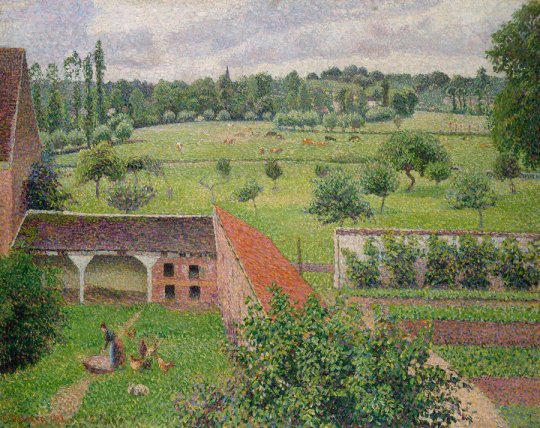
Happy Father's Day.
The painting above is by Impressionist artist Camille Pissarro. Pissarro was known as a father figure within the Impressionist movement by virtue of his seniority but also his wisdom, kindness, and warm-hearted personality.
It wasn't just within the artist movement that he played a paternal role. In his personal life, Pissarro fathered eight children with his wife Julie Vellay. Over his career, he produced many portraits of them, a number of which we hold in our collections. Scroll down to see a handful of these striking yet tender representations of his children.
Perhaps inspired by their father, many of Pissarro's children also went on to become artists, including Lucien, Georges, and Félix.
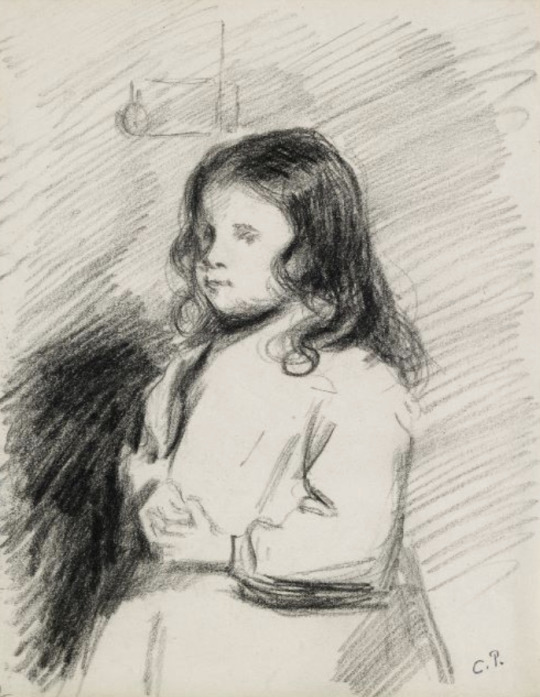
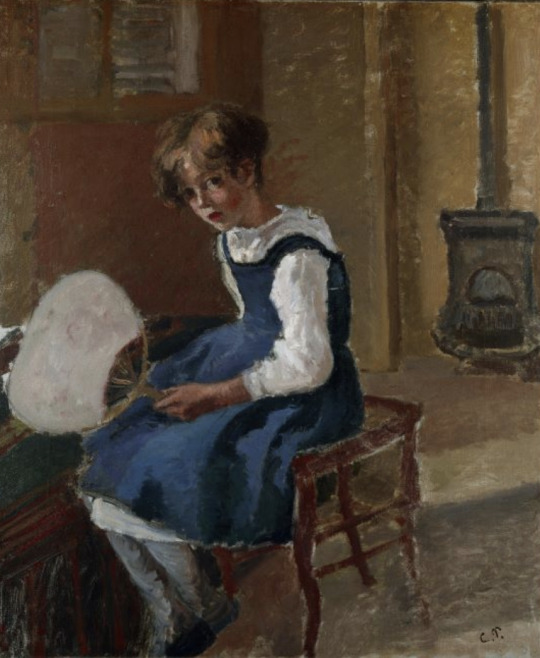

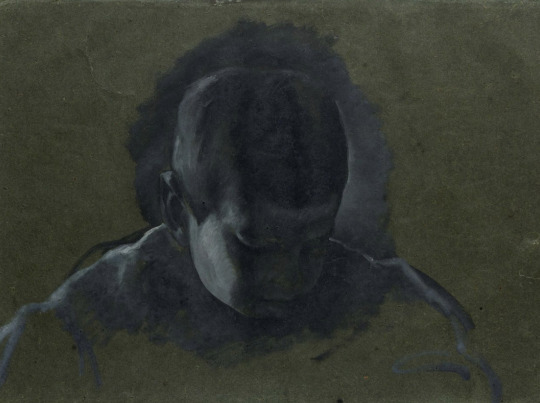

View from my Window, 1886-88.
Portrait of Lucien Pissarro as a Young Boy, 1869–1870.
Jeanne Pissarro (Minette) holding a Fan, c. 1873
Jeanne-Rachel Pissarro seated at a table (Minette), c. 1872
Ludovic-Rodo Pissarro, c. 1883 - 1884
Portrait of Lucien Pissarro, 1883.
#AshmoleanMuseum#Ashmolean#Museum#Art#Culture#MaterialCulture#History#InstaHistory#InstaMuseum#WesternArt#Impressionism#Pissarro#FathersDay#Portraits#Landscape#Painting#Sketch
76 notes
·
View notes
Text
Blaise Pascal

'We know the truth, not only by the reason, but also by the heart.'
French mathematician and philosopher Blaise Pascal was born on this day in 1623. Educated by his father, Pascal showed an impressive grasp of mathematics from a young age, and went on to become a pioneer in the fields of game theory and probability. At the age of eighteen, in an effort to support his father with extensive tax calculations, he also invented and constructed one of the first mechanical calculators.
After an intense religious experience, Pascal's commitment to Catholicism was renewed and he shifted his focus to religious, spiritual and philosophical writings. His most influential works are 'Lettres provinciales' and 'Pensées', the latter containing perhaps one of his most well-known ideas, Pascal's Wager, which argues for a belief in God.
This small porcelain sculpture of Blaise Pascal was made in Sèvres Porcelain Factory c. 1784.
#AshmoleanMuseum#Ashmolean#Museum#Art#Culture#MaterialCulture#History#InstaHistory#InstaMuseum#BlaisePascal#PascalsWager#Philosophy#Maths#Probability#Religion#Porcelain#Sculpture
76 notes
·
View notes
Text
Hans Coper 100

Hans Coper was one of the 20th century’s great potters and artists. Our ongoing display celebrates his centenary by uniting items from our collection, more than 30 loans from private collectors and several seldom-seen, often intimate photographs of Coper at work.
Visit for FREE until 26 September, but don't forget that a General Entry ticket is required.
https://ashmolean.org/event/hans-coper#/
#Ashmolean#Ashmolean Museum#Museum#Oxford#Oxford University#Ceramics#Art#Pottery#stoneware#Hans Coper#Exhibition#Display
53 notes
·
View notes
Text
A Tang Dynasty Goose

Happy Tuesday, everyone! Here is a small goose to brighten up your day.
This little goose is from 7th-8th century China, under the Tang Dynasty, and is made from hand-modelled earthenware. It would have been used a burial good.
Geese have featured prominently in Chinese rituals for many centuries: during the Han dynasty, from 206 BC to 220 AD, it became a symbol of nobility because of their similarity to the swan. Later on, during the Tang Dynasty, they were more often associated with marriage rites, as they were given as wedding gifts or involved in various elements of the wedding ceremony.
Burial goods or tomb figures were common in Tang Dynasty China, and it was thought that the figures represented would be available to the deceased in the afterlife.
#AshmoleanMuseum#Ashmolean#Museum#Art#Culture#MaterialCulture#History#InstaHistory#InstaMuseum#Ancient#Object#Archaeology#Antiquities#AncientHistory#Oxford#Mingqui#TangDynasty#China#Ceramics
131 notes
·
View notes
Text
Wu Guanzhong

Our FREE exhibition of works by Chinese artist Wu Guanzhong (1919–2010) is now open in Gallery 11.
Throughout the course of his career, Wu Guanzhong engaged in the traditions of both European and Chinese painting, studying at the National Academy of Art in Hangzhou and the Ecole Nationale Supérieure des Beaux-Arts on Paris.
During the Chinese Cultural Revolution, he sparked national debate with an article advocating abstract art. Of the two conflicting painting movements of twentieth-century China, he wrote: "Nationalisation of oil painting and modernisation of Chinese ink painting are actually twins. When I encounter a problem in oil painting I transplant it into ink painting and sometimes it’s solved. Vice versa, when a problem couldn’t be solved in ink painting, I would try it in oil painting…"
This exhibition explores Wu Guanzhong's work through the decades from the 1950s onwards. See it until 30 August in Gallery 11. Free, but a General Entry ticket is required.
ashmolean.org/event/wu-guanzhong
'Tree Roots', 1980s.
#AshmoleanMuseum#Ashmolean#Museum#Art#Culture#MaterialCulture#China#ChineseArt#CulturalRevolution#ModernArt#EasternArt#WuGuanzhong#InkPainting#OilPainting#Exhibition#FreeExhibition#Oxford#OxfordUniversity
57 notes
·
View notes
Text
Coming Soon - Tokyo: Art & Photography



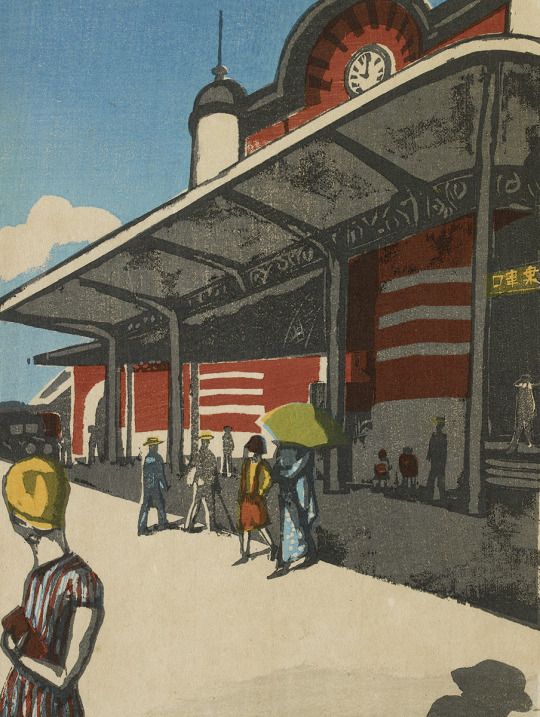
Our next major exhibition will explore Tokyo through the vibrant and varied arts it has generated over 400 years, from its beginnings as the headquarters of the Tokugawa shoguns in the early 1600s to the sprawling modern metropolis and dynamic centre of art, photography and design it is today.
Members will have access to a priority booking period, and will also be able to book into a private view on the day before the exhibition opens to the public. Become a Member today for access to these perks.
Opening 29th July. Find out more: ashmolean.org/tokyo
📷Tokyo from Utsurundesu series by Ninagawa Mika, 2018–2019
📷 Good Evening Sumida River by Sugiyama Motosugu, 1993
📷Uguisudani-zu by Aida Makoto, 1990. Mineral pigments, acrylic on sex phone cards on panel
📷 Tokyo Station, Scenes of Last Tokyo by Onchi Kōshirō, 1945.
##AshmoleanMuseum#Ashmolean#Museum#Art#Culture#MaterialCulture#History#InstaHistory#InstaMuseum#Exhibition#Tokyo#Edo#Design#Photography#NinagawaMika#WoodblockPrint#Japan#Oxford#OxfordUniversity
27 notes
·
View notes
Text
Peonies by May Morris

Peony season is upon us, and we're not complaining! Here are just a few more for you to feast your eyes on.
This group of deep pink peonies was painted by May Morris c. 1905 using watercolour over graphite. Swipe to see the brushstrokes up close.
#AshmoleanMuseum#Ashmolean#Museum#Art#Culture#MaterialCulture#History#InstaHistory#InstaMuseum#Peonies#Peony#Flowers#Spring#Painting#Watercolour#MayMorris
169 notes
·
View notes
Text
Julia Margaret Cameron
Happy birthday Julia Margaret Cameron.
It wasn’t until 1863, when Cameron was in her late 40s, that she started taking photographs. Most photographic pioneers of the time were heavily focused (pun intended) on sharpness and precision, but Cameron’s soft images and dramatic lighting made for very distinctive portraits.
Cameron said of her approach, “The photograph thus taken has been almost the embodiment of a prayer.”

📷Head of St John (May Prinsep) by Julia Margaret Cameron, 1866

📷Study of Prospero (Sir Henry Taylor) by Julia Margaret Cameron, 1865
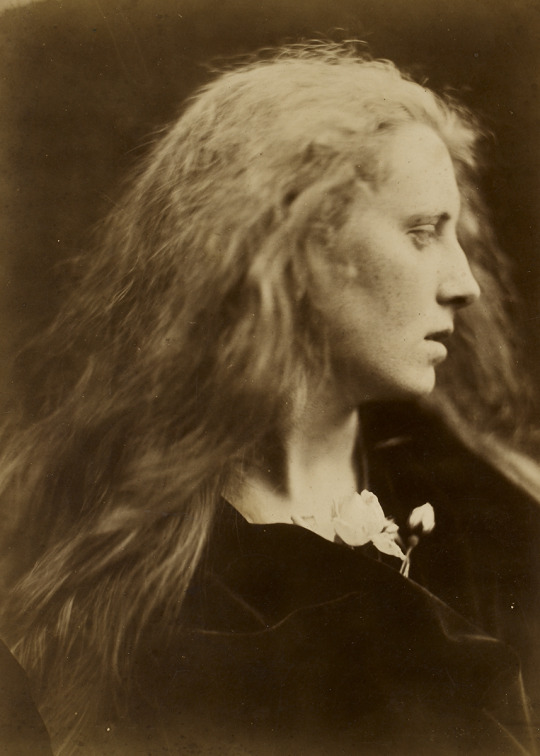
📷Ophelia (Mary Pinnock) by Julia Margaret Cameron, 1867
#AshmoleanMuseum#Ashmolean#Museum#Art#Culture#MaterialCulture#History#InstaHistory#InstaMuseum#JuliaMargaretCameron#Photography#FilmPhotography#Portraits#OnThisDay
355 notes
·
View notes
Text
Museum Week: Eureka!
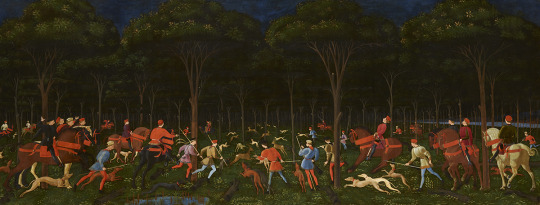
The term 'eureka' comes from the ancient Greek word 'heúrēka', which literally means 'I have found it!' It's also closely linked to the word 'heuristic', which refers to something that serves as an aid to learning, discovery or problem solving.
This artwork represents a true 'eureka!' moment in art history: painted by Italian artist and mathematician Paolo Uccello, it is one of the earliest examples of the use of a vanishing point to achieve a sense of perspective in a painting. A vanishing point is the place at which receding parallel lines appear to converge.
Described as 'intoxicated' by perspective, Uccello studied the concept carefully over many years. He applied his mathematical and analytical mind to his art in order to reconstruct objects in three-dimensional space.
This work, alongside many others that Uccello produced, became a model for other artists who sought to make their works more realistic and life-like. He inspired the likes of Leonardo da Vinci and Albrecht Dürer, and left an enduring legacy with this paintings.
See 'The Hunt in the Forest' by Paolo Uccello (1397–1475) in our Italian Renaissance gallery.
#MuseumWeek#EurekaMW#Ashmolean#AshmoleanMuseum#Art#ArtHistory#Oxford#OxfordUniversity#Painting#Uccello#ItalianArt#ItalianRenaissance#Perspective#TheHuntintheForest#OilPainting#Museums
97 notes
·
View notes
Text
Museum Week: Children's Eyes



Today's #MuseumWeek theme is 'Children's Eyes', which is a wonderful reminder for us to look at the world with the same sense of wonder and curiosity as a child 👀
Does anyone remember our #IsolationCreations fun last year? At the start of the first lockdown, we shared an object everyday and ask you to share your creative responses. We had a number of responses from kids, and these were just a few of our favourites! We love the bright colours, the mixed media and the highly original perspectives on these objects from our collection.
If you were to view the world through the eyes of a child, what might you see differently today?
#MuseumWeek#ChildrensEyesMW#Museum#AshmoleanMuseum#KidsinMuseums#Oxford#OxfordUniversity#Art#Creativity#Crafts#Archaeology#History#MaterialCulture#Collections
166 notes
·
View notes
Text
World Oceans Day

Today is World Oceans day, honouring the salt waters of our world. It would take over 883 quadrillion copies of this party scene from our collection to cover the same area as the global ocean. Plenty of fish in that sea, and all of them in the party mood 🎉
This print is one of the many prints created by Utagawa Kuniyoshi in the 19th century which are now held in our collections.
#Ashmolean#AshmoleanMuseum#Museum#Art#Culture#MaterialCulture#History#InstaHistory#InstaMuseum#EasternArt#WoodblockPrint#JapaneseArt
162 notes
·
View notes
Text
Museum Week: Behind the Scenes

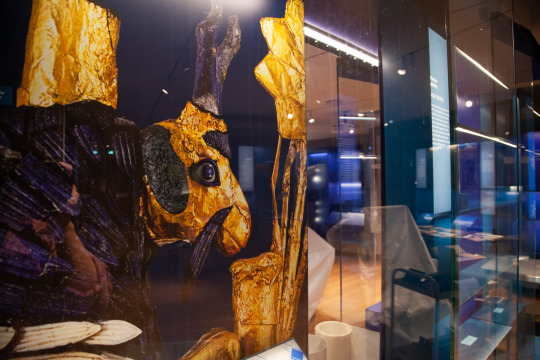

Today's #MuseumWeek theme is one of our favourites - Behind the Scenes 😎These photos offer a sneak peek inside our new Ancient Middle East gallery, opening 26 June.
This gallery will take you on a journey across some 10,000 years. You'll be able to explore village life at the dawn of farming, discover the world’s first cities and the invention of writing, and imagine what life was like in magnificent palaces and temples. You can also listen to Sumerian poetry and write in cuneiform, encounter the art of empires reaching from Iran to Egypt - and find out why the objects that tell these stories are in Oxford.
Stay tuned for more information and come check out the new gallery later this month! Don't forget that FREE tickets are required for General Entry to the Museum.
#MuseumWeek#BehindtheScenesMW#AncientMiddleEast#MiddleEast#History#NewGallery#Archaeology#Antiquity#MiddleEasternHistory#Cuneiform#Objects#Artefacts#Museum#Oxford#OxfordUniversity#AshmoleanMuseum#MaterialCulture#Writing#Sumer#Iran#Egypt#FamilyActi
75 notes
·
View notes
Text
World Environment Day


Today is World Environment Day!
Artists have been inspired by the beauty of the natural world for many centuries, and we have hundreds of artworks in our collections depicting landscapes all over the globe.
Here is one of our favourites by Japanese artist and printmaker Utagawa Hiroshige (1797–1858). Hiroshige often 'broke' the foreground of his prints by use of a dividing line, such as provided by a tree here, to frame the mountain in the background. Usually, this foreground detail is meant to attract the attention of the viewer, but not to be the subject of the print.
#AshmoleanMuseum#Ashmolean#Museum#Art#Culture#ArtHistory#FineArt#EasternArt#Print#UkiyoE#Fuji#Landscape#WorldEnvironmentDay#Hiroshige#Blossoms#Earth
56 notes
·
View notes
Text
Pride Month

Happy Pride month, one and all! 🏳️🌈
This Pride Progress flag is made with a selection of works from our collection in celebration of LGBTQ+ life here in Oxfordshire and around the world.
Pride month serves to advocate for LGBTQ+ rights, and celebrates and highlight the history and achievements of LGBTQ+ communities worldwide. It falls in June to commemorate the Stonewall riots, which occurred in the United States in 1969.
If you want to learn more about the LGBTQ+ stories represented in our collections, you can find the 'Out in Oxford' Trail, as well as a number of articles and stories on the 'stories' section of our website. Find out more via the link in our bio.
#Pride2021#PrideMonth #AshmoleanMuseum#Ashmolean#Museum#Art#Culture#MaterialCulture#History#InstaHistory#InstaMuseum#Pride#LGBTQ+#LGBT#LGBTQRights#PrideFlag#LGBTQStories#LoveisLove#PrideProgress#OxfordPride
53 notes
·
View notes
Text
Two Green Dishes
These ceramic dishes come from quite different parts of the world, but tell an interesting story of cross-cultural influence.
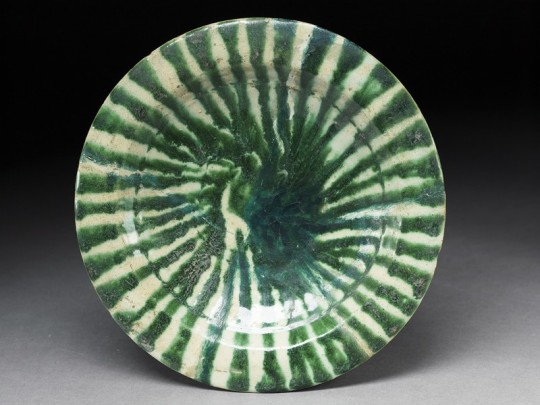
The first dish with trailed green decoration is from 10th-century Iraq, during the Abbasid Period which lasted from AD 750–1258. The Abbasid Period is one of the most prolific moments of ceramic production in the Islamic world, with lots of experimentation with glazes and surface decoration inspired by foreign trends as well as local demand.
Around the time this dish was made, Chinese ceramics had become all the rage with Muslim potters. Many began collecting and imitating the range of ceramic styles produced there: the choice of the green glaze we see on the Iraqi dish is reflected in the second dish, which was made in Tang Dynasty China centuries prior.
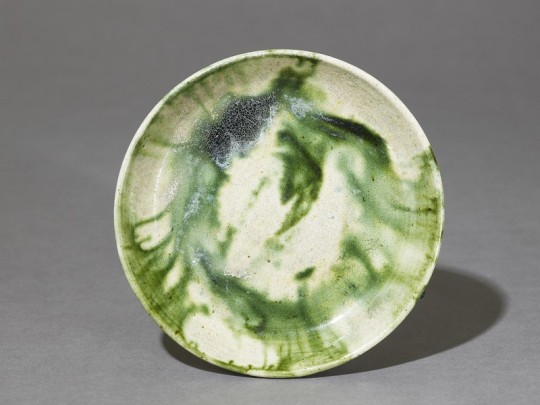
#AshmoleanMuseum#Ashmolean#Museum#Art#Culture#MaterialCulture#History#InstaHistory#InstaMuseum#Ancient#Object#Archaeology#AncientHistory#Oxford#China#Iraq#EasternArt#Ceramics#Earthenware#Pottery#Glaze#Green#IslamicArt#TangDynasty
151 notes
·
View notes